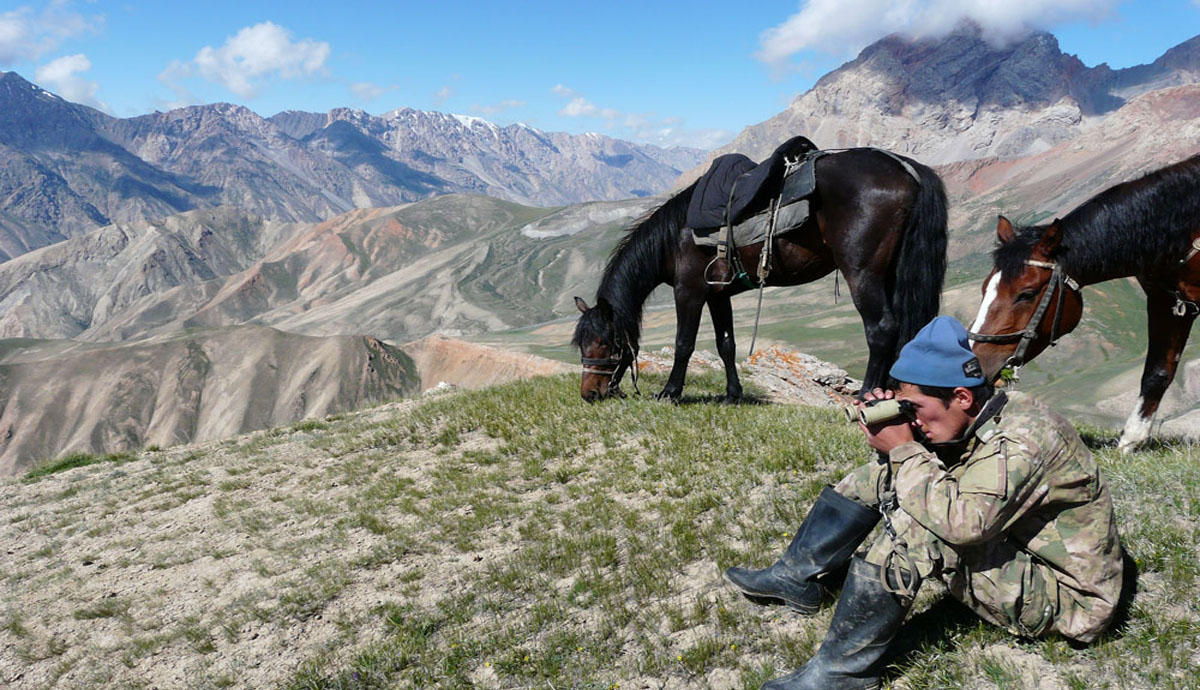Afghanistan: Conservation of Snow Leopards & Ecosystems

| PROJECT TITLE | Conservation of Snow Leopards and their Critical Ecosystem in Afghanistan |
|---|---|
| COUNTRY | Afghanistan |
| EXECUTING PARTNER | Wildlife Conservation Society |
| PROJECT PERIOD | 2016-2019 |
| GEF FUNDING | $2,692,370 |
| CO-FINANCING | $9,035,000 |
POACHING AND ILLEGAL WILDLIFE TRADE
The majestic, enigmatic beauty of snow leopards has long captured the human imagination. It is tragic that these exact traits are now endangering snow leopards’ very existence. They are ruthlessly hunted for the splendor of their skins, and the traditional medicinal value of their bones and teeth. These, and other body parts and derivatives, are traded in illegal and legal markets around the world. The high demand and value of these wildlife products, when combined with other threats, have dealt a devastating blow to snow leopard populations, which, in Afghanistan, are currently estimated at between 100 and 200 animals.
Poaching and illegal wildlife trade are problems that confront every country where the snow leopard is found. These issues persist despite the fact that the Convention on International Trade in Endangered Species of Fauna and Flora (CITES) prohibits most international trade in this globally endangered species. In Afghanistan, this project supports the government and partners to fight this criminal trade, working to reduce supply (i.e. poaching) and demand for wildlife products among consumers, as well as dismantling the networks that facilitate illegal trade.
Snow leopards inhabit the most remote part of northeast Afghanistan, known as the Wakhan Corridor. Nestled between some of Asia’s great mountains, bordering Tajikistan, Pakistan and China, this narrow valley is immense at around one million hectares, and is a globally important corridor that connects several snow leopard landscapes.
The project applies a multidimensional strategy to systematically address, among other issues, illegal poaching and wildlife trade by:
- enhancing an understanding of wildlife trade and trafficking in Afghanistan
- implementing activities to reduce the supply of snow leopard products; and
- improving the national government capacities and enforcement.
Much about snow leopards remains a mystery due to a dearth of available scientific information and limited research. This project will carry out a full assessment of wildlife harvest patterns, trade markets and market forces that influence the trade in the country. The results of the assessment will be used to establish a system for monitoring trends in wildlife trade, including the activities of harvesters, markets and consumers and to evaluate the effects of education and enforcement efforts.
Community support and participation will be especially important given the remoteness and inaccessibility of this area. Although Afghanistan has enacted laws to protect wildlife and control illegal trade, its capacity to enforce them in the field is very limited.
A range of targeted interventions will be implemented including outreach to Wakhan communities and promoting educational initiatives in the schools. The overall aim is to increase the understanding of the need to protect snow leopards and to enlist local support for coordinating and co-managing anti-poaching and anti-trafficking activities. The project will train community rangers to patrol and report poaching activities.
As a complement to the community-level initiatives, the project will strengthen the capacities of Afghan police, judiciary and customs to increase knowledge and promote better enforcement.
Appropriate training materials on the illegal wildlife trade will be developed and incorporated in basic training programmes. The project will also work with the responsible ministries to address gaps related to wildlife protection in the existing legislation, by providing technical guidance, best-practice information and legislative recommendations.


